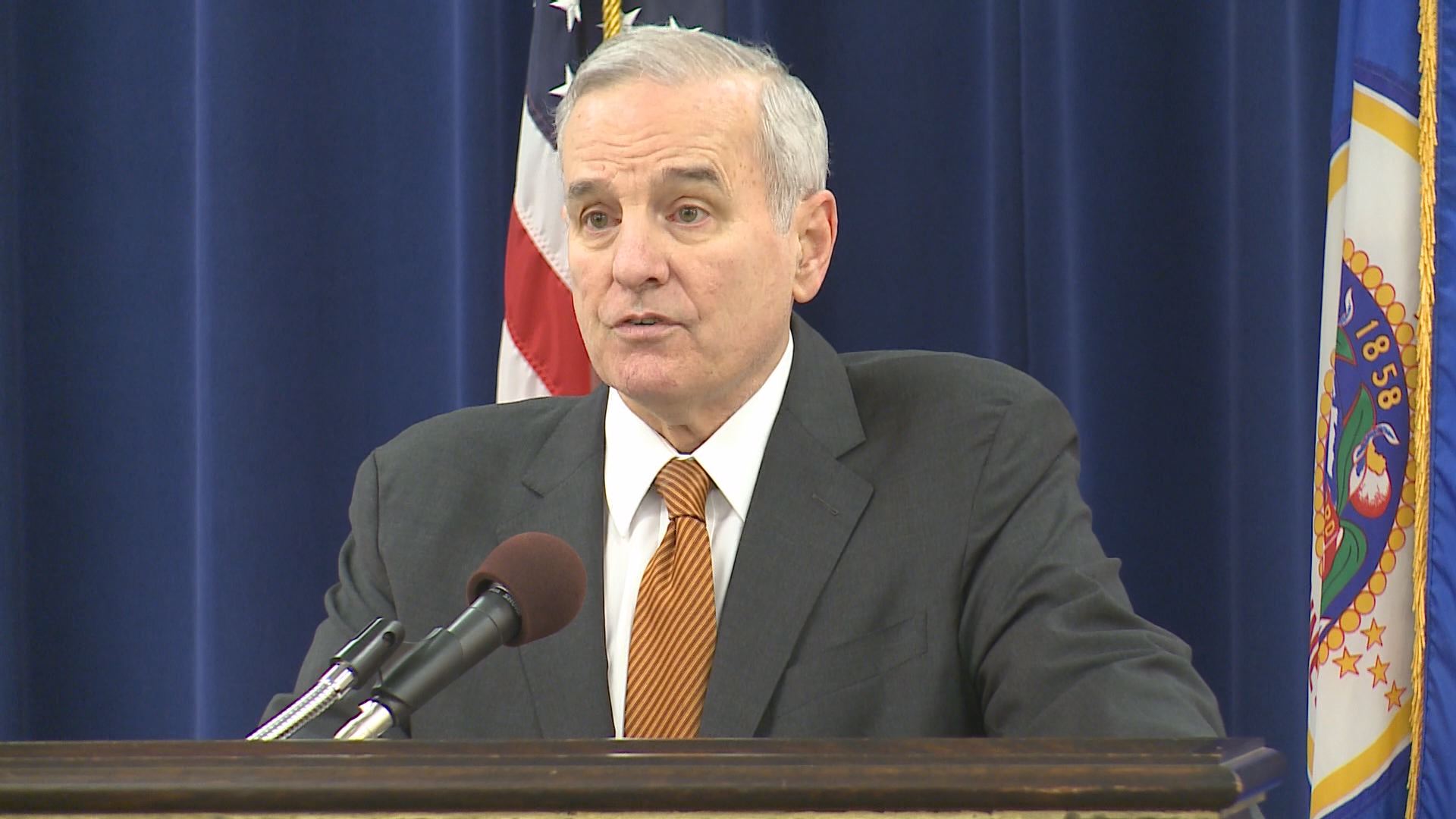ST. PAUL, Minn. – Gov. Mark Dayton unveiled his jobs bill on Friday. It calls for $1.4 billion in borrowing for 113 projects around Minnesota.
Dayton said he had considered 282 requests, totaling $3.7 billion, but decided the state is only able to fund 113 projects. Leadership in GOP-controlled House were quick to attack the plan as too light with regard to transportation projects, particularly roads and bridges outside the Twin Cities Metropolitan area.
“It is awfully large,” said Rep. Joyce Peppin, R-Rogers, the House Majority Leader. “That is much larger than we have done in the past and it is much larger than our Caucus will be comfortable with voting for.”
Peppin said she has other concerns.
“I think the other, maybe larger issue, is the lack of funding for transportation,” said Peppin. “The Governor’s proposal only has a bridge and road project in Minneapolis and one in St. Paul. Nothing, not a dollar, for rural Minnesota or even suburban roads.”
Dayton said he wants money for clean water infrastructure improvements around the state, along with rail safety improvements and public safety improvements. He also said higher education is a major priority.
“I could have filled the $41.4 billion with good requests from the University of Minnesota and MNSCU campuses alone,” said Dayton. “They are seriously in arrears in their basic upkeep, maintenance. They have buildings that are obsolete, that they want to repurpose for more efficient use.”
“The total amount for the University of Minnesota alone is a $153 million in this bonding bill,” said Myron Frans, Management and Budget Commissioner, “and at the MNSCU system, there are renovations on the campuses. For example, at the South Central College in North Mankato, that will expand the capacity of their stem programs. The total investment for MNSCU is also $153 million.”
Peppin said her caucus prefers to keep bonding under $1 billion. However, Frans debated that concept.
“In 1998, it was when this idea of billion dollar limit on the biennium for the bonding bill was really first used and at that time that represented about 10 percent of the general fund,” said Frans. “Well today, 10 percent of the general fund would be $2 billion. So, even if you use that rationale which we are not suggesting, it really shows that we have the ability, we have the affordability and we have the need to go forward.”
$70 million is earmarked for the St. Peter State Hospital in the bill.
“Our state hospitals and treatment programs in St. Peter, Moose Lake and Anoka, all need investments to improve patient and staff safety and to meet the demand for services and to promote integration back into the community,” said Frans.
Dayton said he knew convincing some in the Legislature would be “pushing the boulder uphill.”
“For those who, under the guise of fiscal responsibility, say we cannot increase our bond indebtedness to this level and they are wrong.”
Questioned about funding for a $135 million state portion of funding for the Southwest Corridor Light Rail project, Dayton was direct.
“There is not bonding money for a light rail. If we are going to fund light rail, it is going to have to be through some kind of metro-wide sales tax increase, quarter percent, half a percent,” said Dayton. “It will provide the funding for the Southwest line, for the future of the Bottineau line, for east metro corridor rapid bus.”
Dayton said he saw this Bill as a chance to improve the entire state.
“This is a tremendous opportunity to make the kind of significant investment in the future of Minnesota and our infrastructure, in our higher education buildings and the like that we need,” said Dayton.
Minneapolis Mayor Betsy Hodges announced that her city received full funding of two projects in the Governor’s bill. $31.875 million toward repairing the 10th Avenue Bridge and $2.5 million to expand the City’s Emergency Operations and Training facility. The latter is a facility for training first responders.
Dayton and Frans said “fairness” was a key aim of the Governor’s proposal.
“We want to provide a balance, not only geographically, but also in terms of new projects and also asset preservation,” said Frans. “About a third of the recommendations fund projects in the Metro. About one-third in greater Minnesota area, and about a third are distributed around competitive grant programs around the state.”

